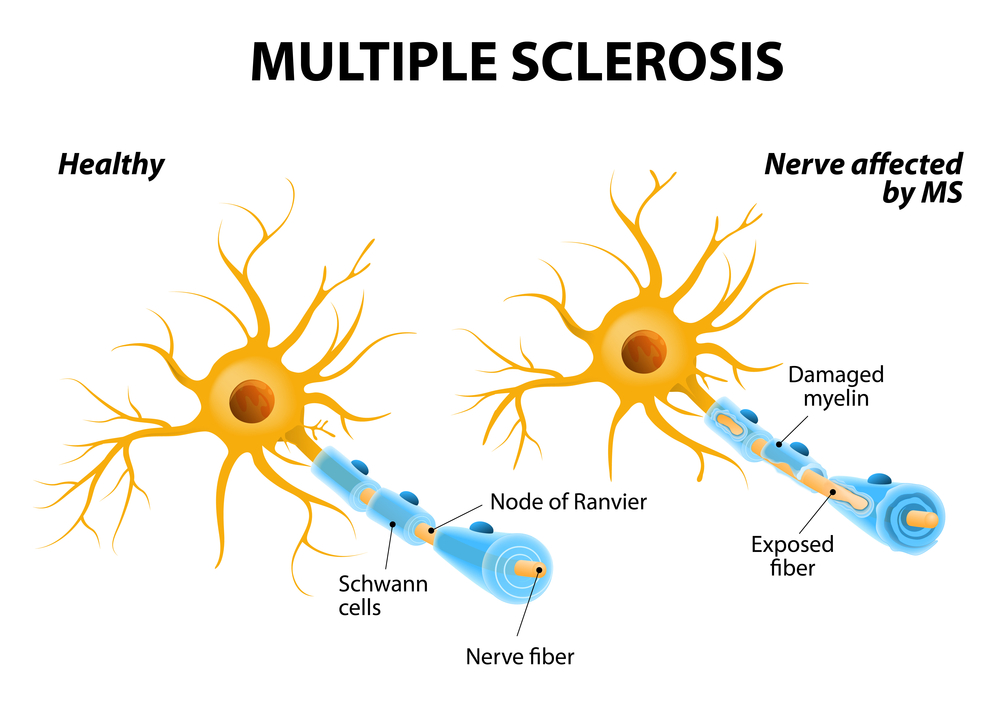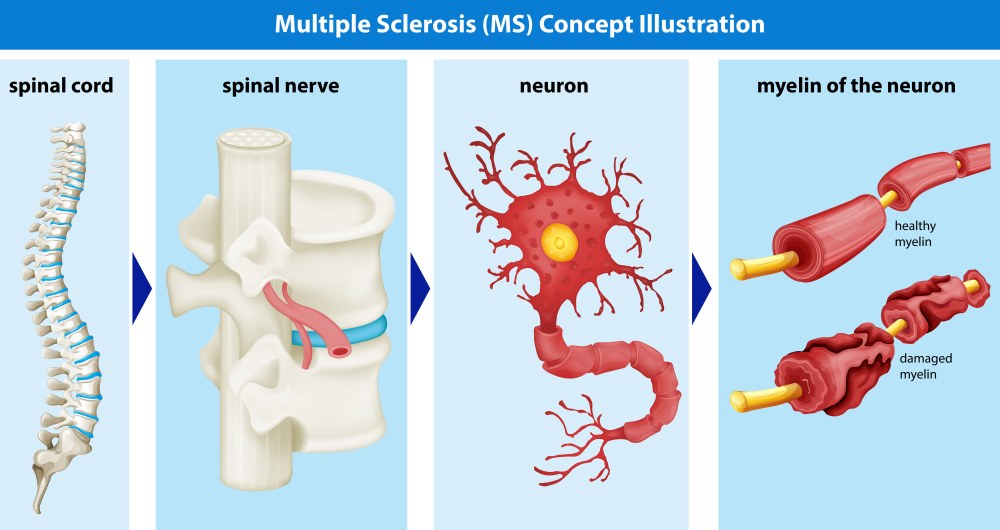Multiple sclerosis (MS, multiple sclerosis, disseminated sclerosis, sclerosis disseminata, SD) is a chronic disease of the nervous system in which nerve tissue is replaced in places by connective tissue with the formation of plaques. Tissue replacement causes dysfunction of the nervous system, which is manifested by various symptoms. Usually, the course of multiple sclerosis is undulating and progressive. The disease gradually leads to limitation of life and can reduce the life expectancy of the patient. From this article you can find out how and why multiple sclerosis develops, how it manifests itself and how it affects life expectancy.
Multiple sclerosis is seen as an autoimmune-inflammatory process. In this disease, the myelin sheath of nerve cells is destroyed by the action of its own antibodies. This phenomenon is called demyelination. However, this does not happen to every person; prerequisites are needed to start the process.
Causes

According to modern concepts, multiple sclerosis refers to multifactorial diseases, that is, it is based on a combination of several causes at the same time.
The following factors are considered the most important:
- viral infection;
- hereditary (genetic) predisposition of the immune system;
- geographical features of the place of permanent residence.
Viral infection
It is believed that multiple sclerosis is the result of so-called slow infections. The characteristic features of slow infections are: a long period without any symptoms (latent), selectivity of the lesion (i.e., the same organs and systems), development only in a particular type of animal or person, and a constantly progressive course.
A certain specific infection that causes the development of multiple sclerosis has not yet been discovered, but the role of many viruses is confirmed by various facts: the relationship of the onset of the disease or exacerbation with a viral infection, the presence of a high titer of antiviral antibodies in the blood of patients with multiple sclerosis, the induction of multiple sclerosis in an experiment in the laboratory in animals under the influence of viruses.
Among the infectious agents that can presumably serve as a starting point in the development of multiple sclerosis, retroviruses, measles, herpes, rubella, mumps, Epstein-Barr viruses should be noted. Most likely, the pathogen enters the body in childhood, and then, in the presence of other factors, provokes immune disorders on the surface of nerve cells. The immune system starts producing antibodies against these viruses. However, antibodies do not attack the pathogen itself, but the nerve cells that it perceives as a danger. As a result, the destruction of the nervous tissue occurs. To implement such a mechanism, a special hereditary predisposition is required.
hereditary predisposition
To date, it has been established that the disease occurs in families where there is a patient with multiple sclerosis, 20-50 times more often than in the general population. This is especially true for relatives of the first, second line of kinship (children, brothers, sisters). Cases of familial multiple sclerosis account for up to 10% of the total.
It was revealed that some genes of the 6th chromosome determine the originality of the immune response, which is characteristic of multiple sclerosis. Other genes responsible for the structure and function of non-specific enzymes, immunoglobulins, myelin protein are also involved in the development of the disease. That is, in order for a disease to occur, a combination of several genes must match in a person. It is believed that even the features of the course of multiple sclerosis are encoded by certain hereditary structures.
Geographic features
Statistical studies have found that the prevalence of multiple sclerosis is higher in areas with high humidity and cool climate, in river valleys, with less sunlight (short daylight hours).
It is noted that in northern countries, more distant from the equator (this phenomenon is called a latitude gradient), Caucasians have a significantly higher risk of the disease. The prevalence of multiple sclerosis in Germany, Austria, Switzerland, South Australia, in the northern United States is much higher than in other countries of the world.
Such an interesting pattern was revealed: if a person lived in an area with a high risk of developing multiple sclerosis in childhood, and before reaching the age of 15 he changed his region of residence, moving to a place where the incidence is many times lower, then his risk of getting sick is significantly reduced. If migration is carried out after 15 years, then the change of residence does not affect in any way, and the risk remains high. It is believed that this is due to the peculiarities of the formation of the immune system before reaching adolescence.
How does multiple sclerosis occur?

If a person accidentally coincides with the genetic characteristics of the response of the immune system to environmental factors (area of residence, environmental and nutritional characteristics, etc.), in response to a viral infection, a whole cascade of immune disorders is launched in the body.
Virus antigens, penetrating the nervous system, attach to the surface of nerve cells, in particular to myelin (the protein sheath of nerve fibers). The immune system attacks foreign formations, perceiving them as a danger. The attack consists in the formation of antibodies against viral particles, but since the latter bind to myelin, antibodies are also produced against it. An abnormal immune response (autoimmune) develops - the body fights against its own structures. Subsequently, myelin is perceived as foreign, and antibodies are produced constantly.

